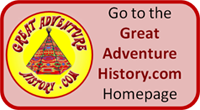
An important part of adding theme to the sections
of a theme park is an entry portal, signifying the transition from one
area to the next. These can range from elaborate entries to simple
signs, and often frame the scenery beyond the portal.
|
| |
|
|
 |
| |
|
|
| THEMED AREAS LISTED A TO Z |
| |
|
|
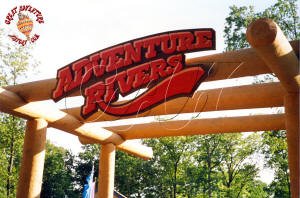 |
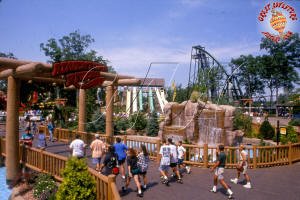 |
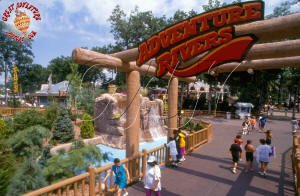 |
| |
|
|
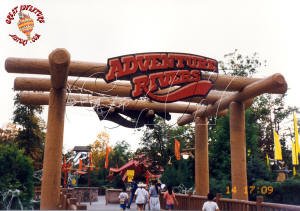 |
The entry to Adventure Rivers was
simple but effective, with a timber structure spanning the pathway
framed by twin waterfalls. The portal was removed with the addition of
Skull Mountain though the second waterfall still stands today.
 |
 |
| |
|
|
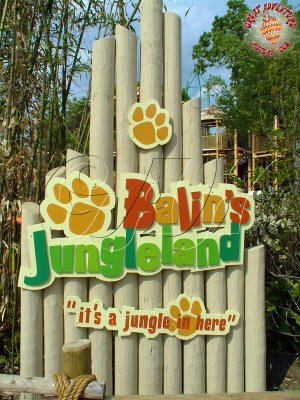 |
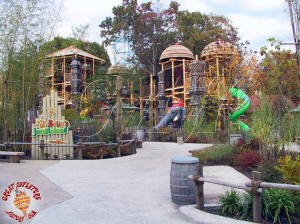 |
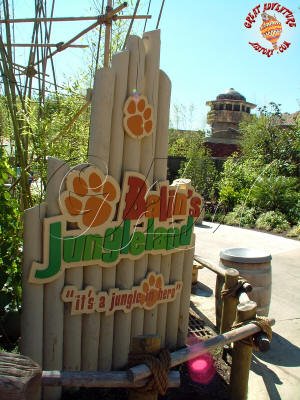 |
| |
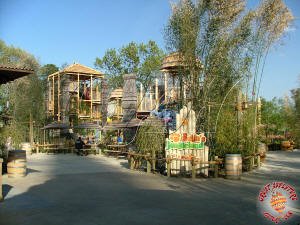 |
| |
|
|
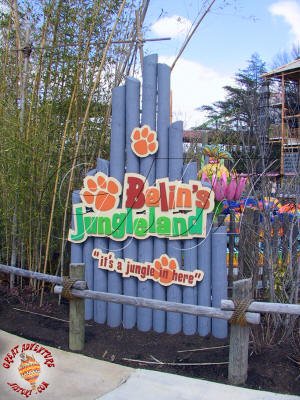 |
Balin's Jungleland was the
section within a section in The Golden Kingdom. The entries to the
children's area were located at either end with rustic logs serving as
the posts to hold the colorful signs.
 |
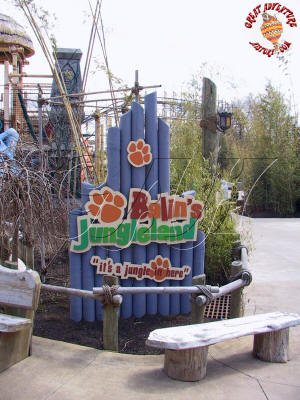 |
| |
|
|
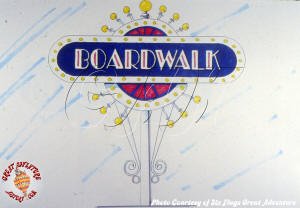 |
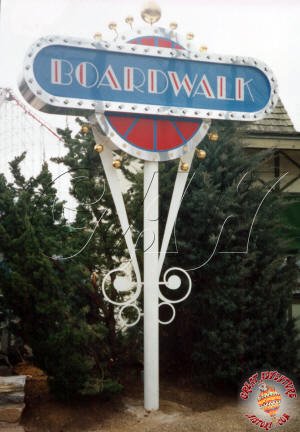 |
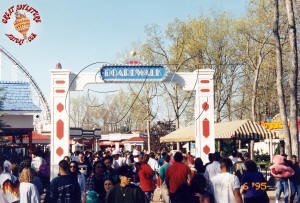 |
| |
|
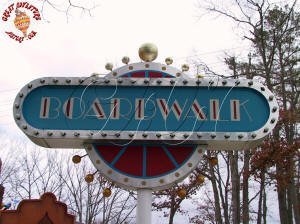 |
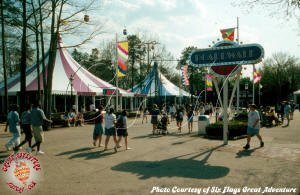 |
| |
|
|
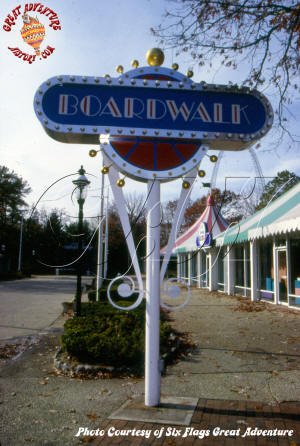 |
The Boardwalk area of the park
featured matching signs at each end with a style matching the main
buildings of the park's games area. At one point there was a short-lived
portal added to the end of the Boardwalk facing the Carousel but the
portal proved impractical for vehicle access. Over time the decorative
scrolls were removed as they were mangled by guests and the colors faded
before the signs were finally removed.
 |
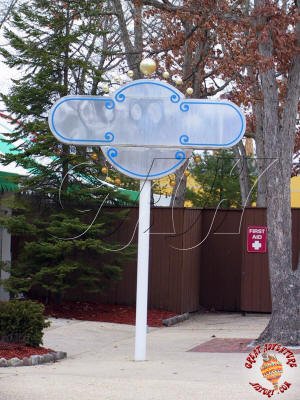 |
| |
|
|
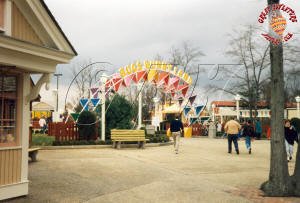 |
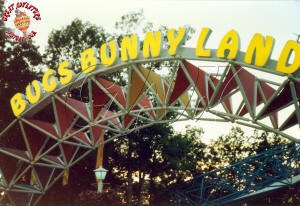 |
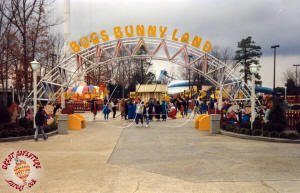 |
| |
|
|
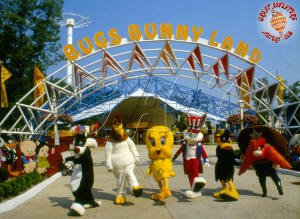 |
Bugs Bunny Land
featured two portals in its time in the park. Originally the area opened
with a simple but colorful arch spanning the entrance with illuminated
letters. As part of the thematic enhancements under Time Warner's
ownership of Six Flags the entry arch was replaced with a giant tree
stump with hollowed out archway. Originally a Bugs Bunny figure was
poking out of the center of the hollowed archway.
 |
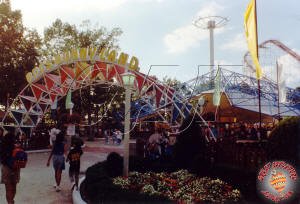 |
| |
|
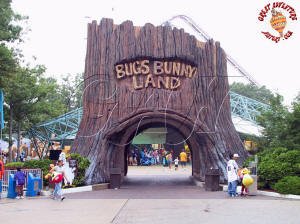 |
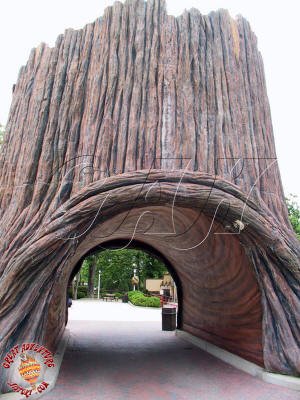 |
| |
|
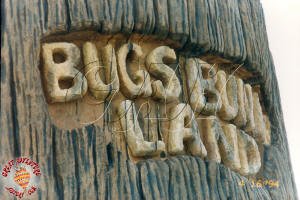 |
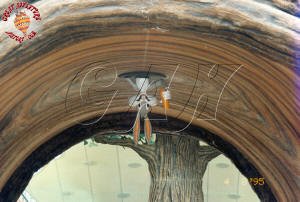 |
| |
|
|
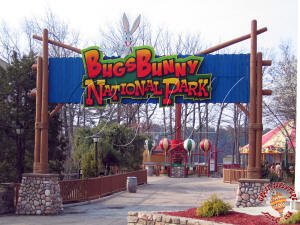 |
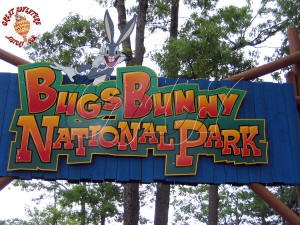 |
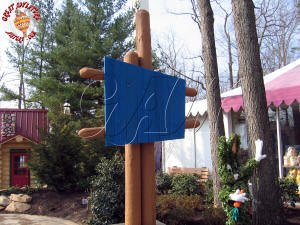 |
| |
|
|
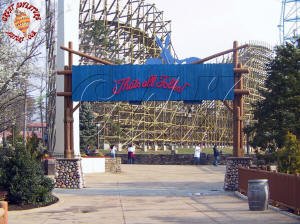 |
When Bugs Bunny
National Park was added in 2006, twin portals were added at both
entrances to the section. The simple timber structures reflected the
rustic national park style and added to the simple theme elements of the
children's area.
 |
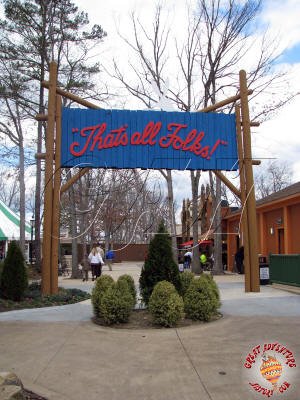 |
| |
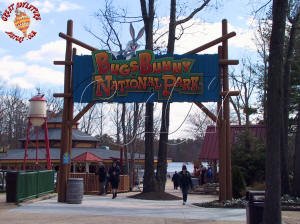 |
| |
|
|
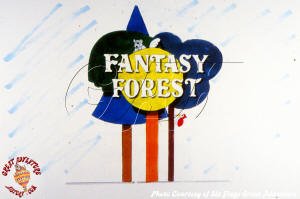 |
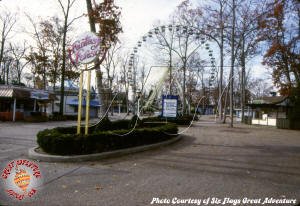 |
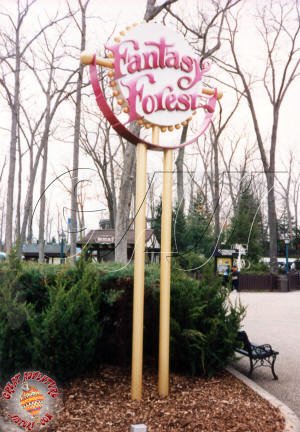 |
| |
|
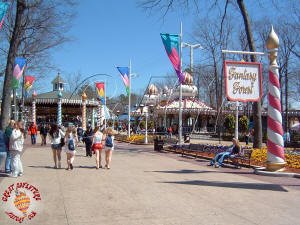 |
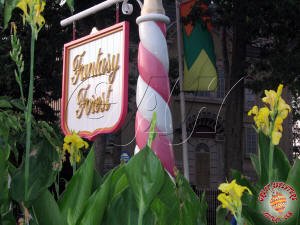 |
| |
|
|
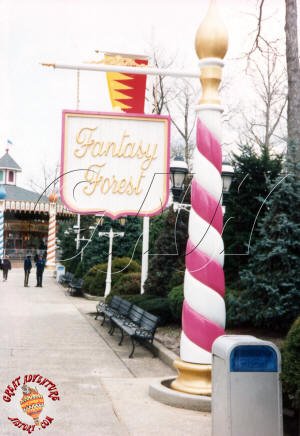 |
When Time Warner owned Six Flags
in the 1990's, adding thematic elements to the parks was a major
priority, and taking the old Dream Street area of the park and making it
a cohesive section was a difficult undertaking. The theme Fantasy Forest
was the most effective way of turning the area into a themed section,
though it was bisected by the Main Street entrance area. Because of the
two sections of the same area, two entry signs were created reflecting
their central attractions. The sign for the half facing Big Wheel
reflected the shape of the wheel and the design of the sign on the Big
Wheel, while the side facing the Carousel reflected the columns and
domes of the Carousel. |
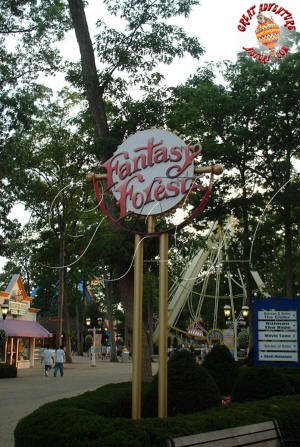 |
| |
|
|
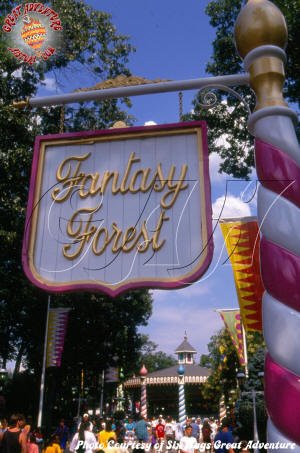 |
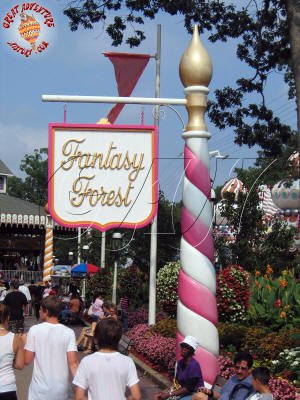 |
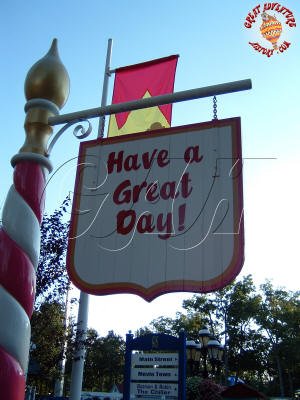 |
| |
|
|
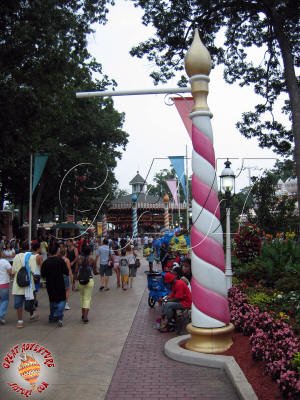 |
Over time both signs were removed, with the Big
Wheel side sign removed in the early 2000's and the Carousel side coming
out to widen the walkway for the Glow in the Park Parade.
|
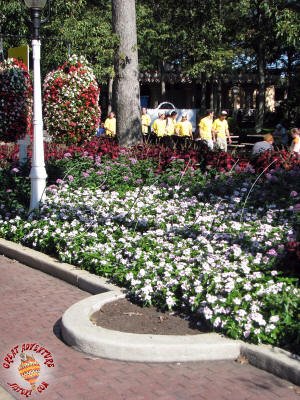 |
| |
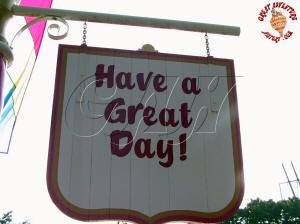 |
| |
|
|
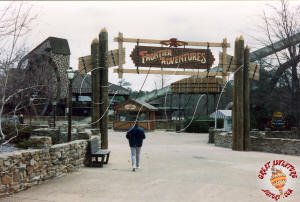 |
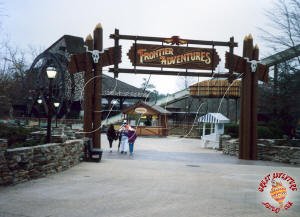 |
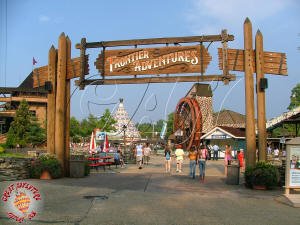 |
| |
|
|
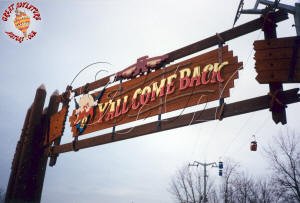 |
The original western section of
the park known as Rootin' Tootin' Rip Roarin' was renamed Frontier
Adventures in the 1990's when it was combined with the Hernando's
Hideaway area and expanded to what had been a portion of Dream Street in
the early years. |
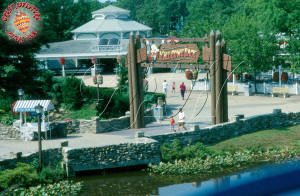 |
| |
|
|
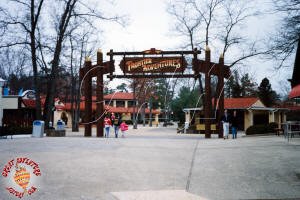 |
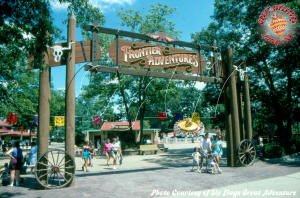 |
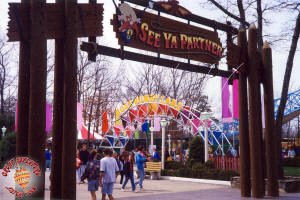 |
| |
|
|
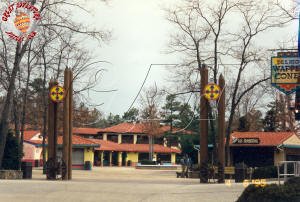 |
New portals were added to create
the thematic break between areas. The portal on the former Hernando's
side was modified with the sign removed and colorful paint added to the
columns and the one spanning the former Dream Street area was rethemed
with the addition of the Golden Kingdom area in 2005. |
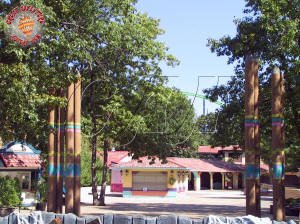 |
| |
|
|
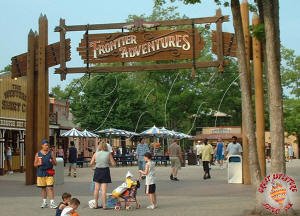 |
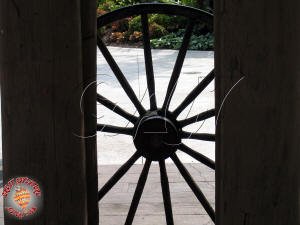 |
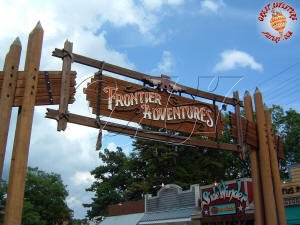 |
| |
|
|
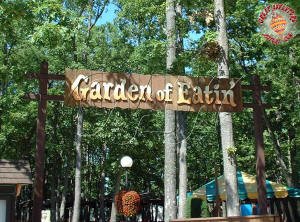 |
The park's picnic
grove was originally known as the Garden of Eatin' and featured a portal
surrounding the entrance gates bearing the name for many years. That
sign was removed and a new free standing portal was constructed in front
of the gates featuring twin stack stone columns spanned by a metal arch
with the new name Old Country Picnic Grove. Before the start of the 2011
season the new portal was removed and the picnic grove (now in a gated
area) featured no signage at all other than signs on the gate to the
area which spanned the fences from the Exploratorium and the former
Freefall site. |
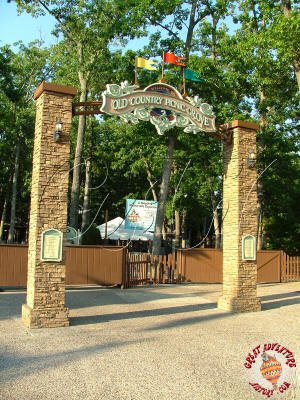 |
| |
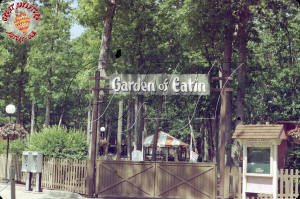 |
| |
|
|
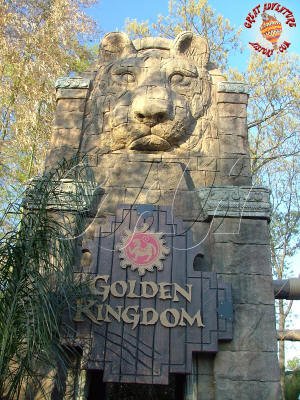 |
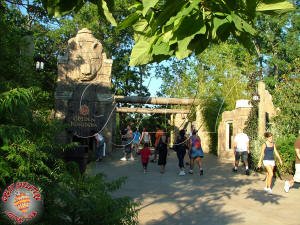 |
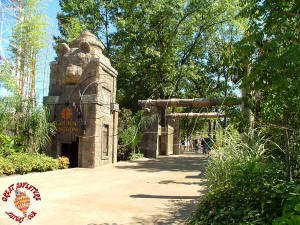 |
| |
|
| Perhaps the most
elaborate portal in all of the park's history was the Golden Kingdom
portal on the Boardwalk side entrance. The impressive tiger carving and
stone walls added a sense of age and importance to the area and
incorporated the service gates necessary for vehicle access to the
park's Security and First Aid buildings. The massive gates were
framed with logs bound in rope to add a jungle/primitive feeling to the
entry and really set the tone for the jungle themed section. The former
Frontier Adventures portal was given a makeover as a second entrance to
the Golden Kingdom with carvings added to the columns and new signage
and decorative objects added to complete the look. |
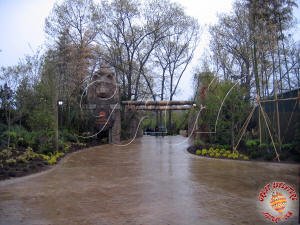 |
| |
|
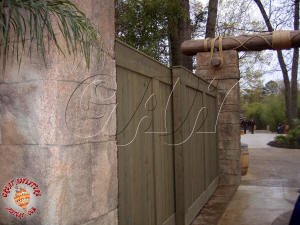 |
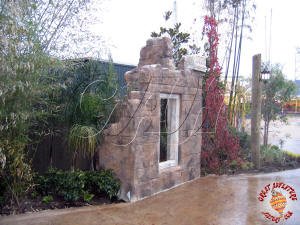 |
| |
|
|
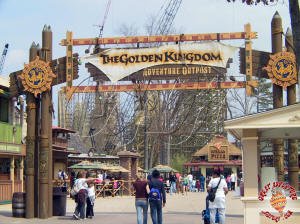 |
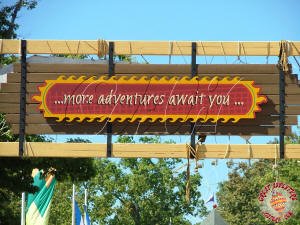 |
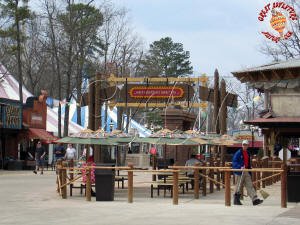 |
| |
|
|
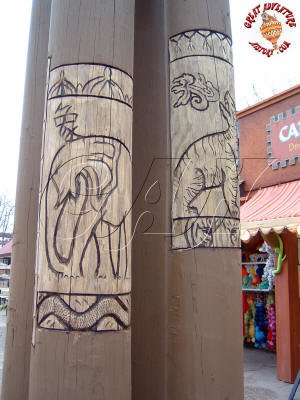 |
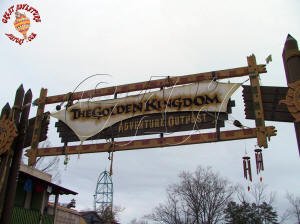 |
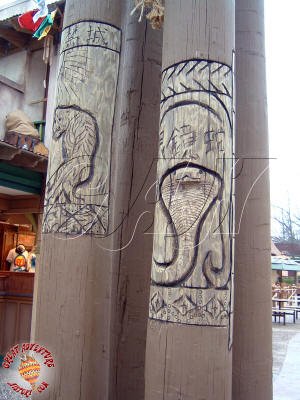 |
| |
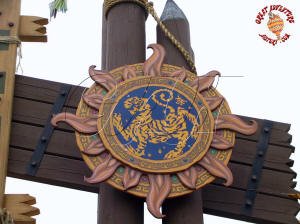 |
| |
|
|
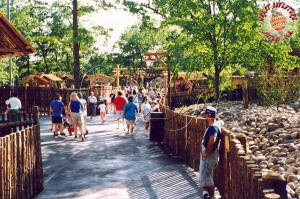 |
As part of the
Adventure Rivers area of the park, Koala Canyon was a section within the
area just for kids. The entry featured an overhead sign framing the
gates all done in simple wooden poles and wooden letters.
 |
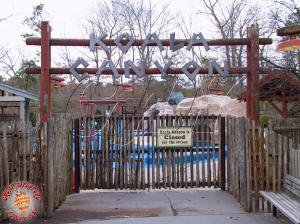 |
| |
|
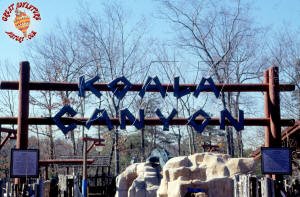 |
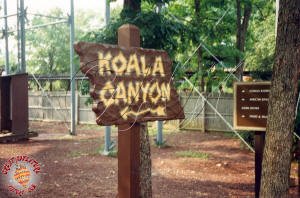 |
| |
|
|
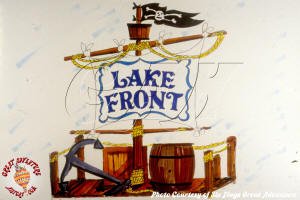 |
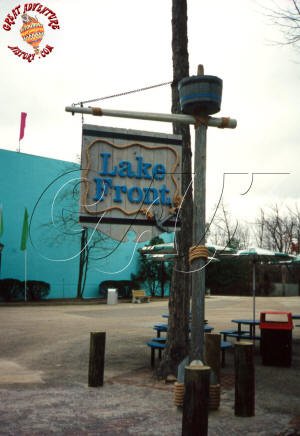 |
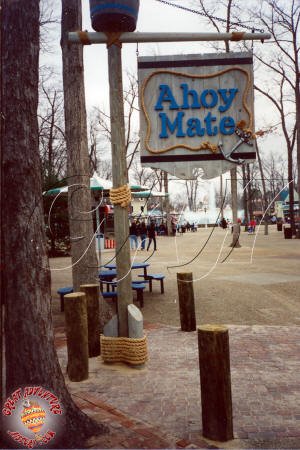 |
| |
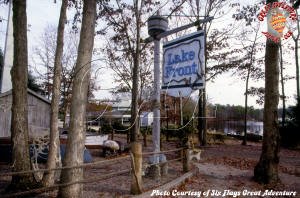 |
| |
|
|
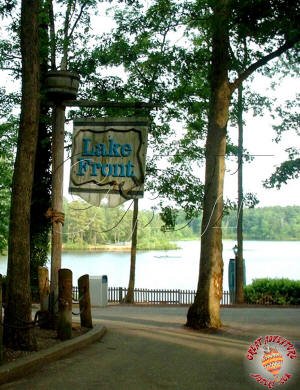 |
As a formerly un-themed area of
the park, the area along the lake which had a collection of vaguely
nautically themed attractions was unified with the name Lake Front. The
theme was enhanced greatly with the crow's nest style signs and pilings
bound with rope. These simple touches combined with the themed
music went a long way to create a cohesive theme. |
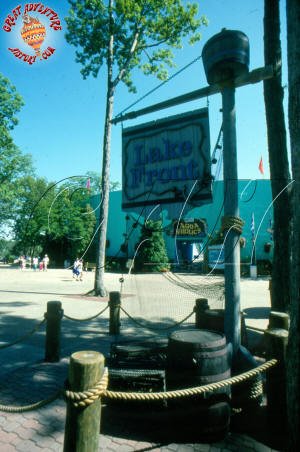 |
| |
|
|
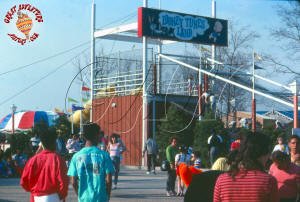 |
Looney Tunes Land featured a unique play
structure portal that was constructed as part of Shirt Tales Land, the
only real change being the illuminated sign on the top. Guests could
enter via the cargo nets and slides or under the flanking shade
structures.
 |
| |
|
|
%20copy_small.jpg) |
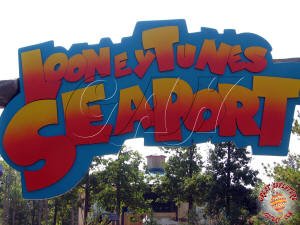 |
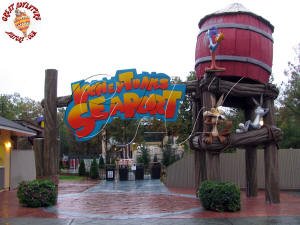 |
| |
|
|
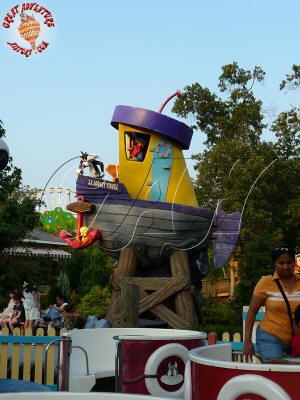 |
Added in 1999 as part of the War
on Lines, Looney Tunes Seaport was the park's second kids section. The
area was built with multiple entrances, the main entrance facing out
towards Movietown. The smaller pathways into the area featured smaller,
less elaborate signage. When Wiggles World was added, elements of the
original portal were moved to the new entrance near Congo Rapids.
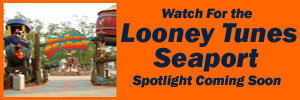 |
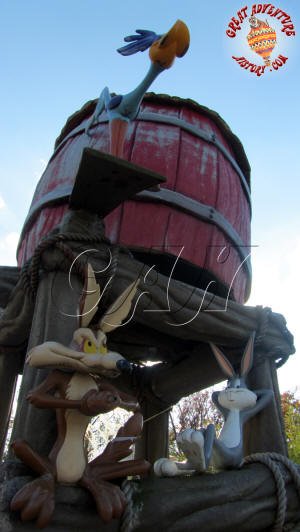 |
| |
|
|
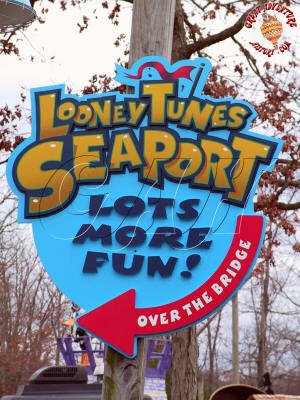 |
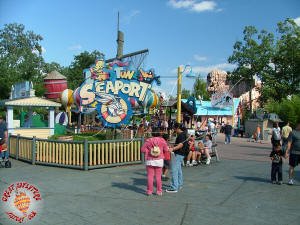 |
%20copy_small.jpg) |
| |
%20copy_small.jpg) |
| |
|
|
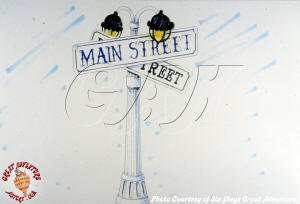 |
The Main Street area of the park
has never received any kind of signage or portal, but concept art for a
sign was created though never constructed. This was part of the retheme efforts in the park in the 1990's while Time Warner owned Six
Flags. |
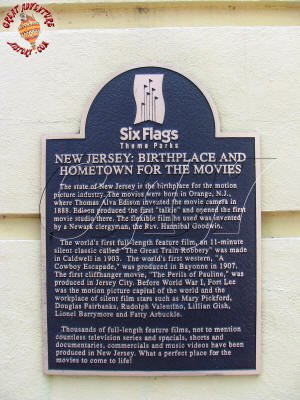 |
| |
|
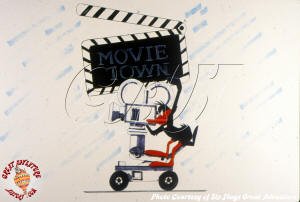 |
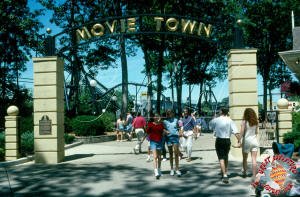 |
| |
|
|
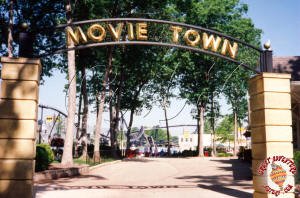 |
Movie Town was
created in 1993 as a retheme of what had originally been the Fun Fair
area of the park. An early concept for the signage was a clap board atop
a camera, but this gave way to the more refined arches that spanned the
pathways at each end of the section. One arch was removed when
Batman & Robin: The Chiller was built in 1997, but the arch near Studio
28 Arcade still stands and features a plaque about the movie industry's
start in New Jersey.
 |
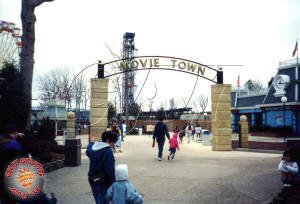 |
| |
|
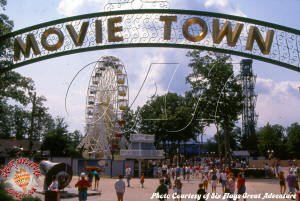 |
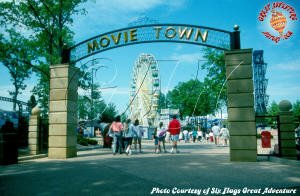 |
| |
|
|
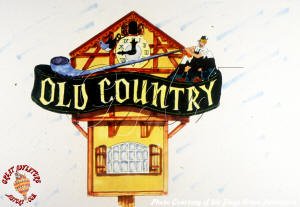 |
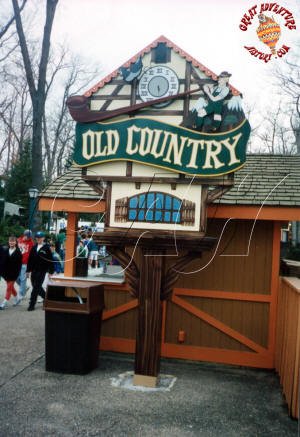 |
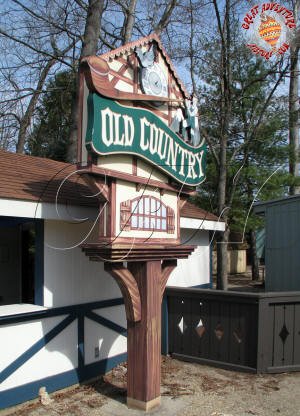 |
| |
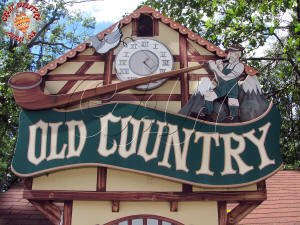 |
| |
|
|
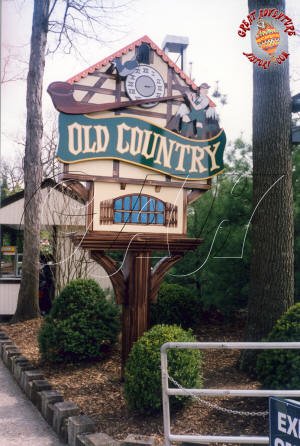 |
Old Country featured a pair of fairly elaborate signs, with a stylized
cuckoo clock design and man in lederhosen blowing an Alpen horn. The
sign at the Movietown end was removed when the Chiller was built in
1997, and the sign near the Fountain was removed when the Old Country
section was closed in 2008.
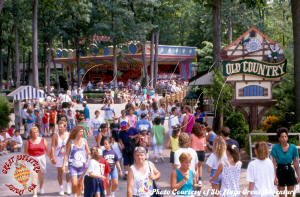
In 2006 the Hernando's Hideaway area of the park was remodeled becoming
Plaza del Carnavale. At the entry to the area a unique portal was
constructed with a terra cotta style column on one side and a taller
column with wrought iron sign on the other side. Both columns feature
blue accent tile reflecting the coastal theme of the section.
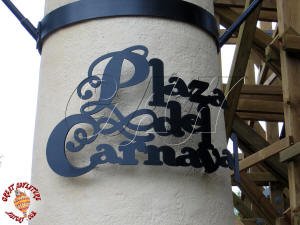 |
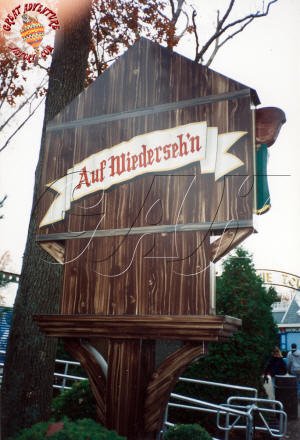 |
| |
|
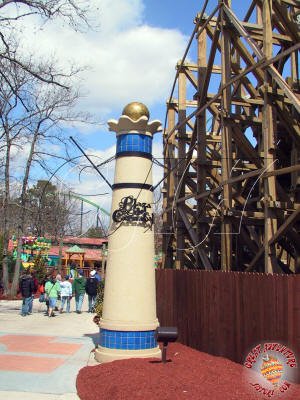 |
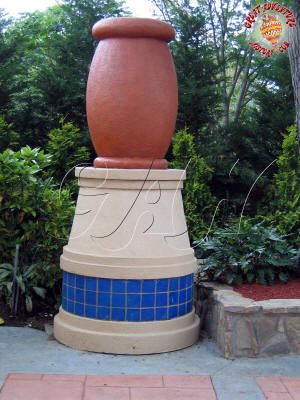 |
|
|
|
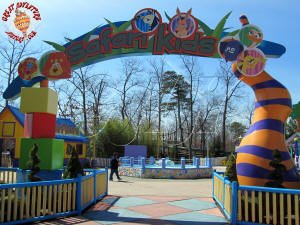 |
The portal originally
constructed for the Wiggles World area of the park were re-themed for
the 2011 season becoming the entry to the Safari Kids section of the
park. The colorful entries were repainted in different colors and new
cartoon style animals were added in place of the original Wiggles
characters.
 |
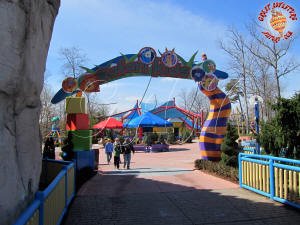 |
| |
|
| |
|
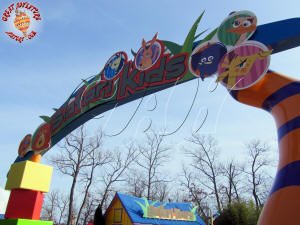 |
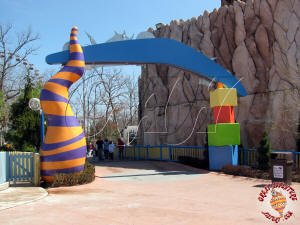 |
| |
|
|
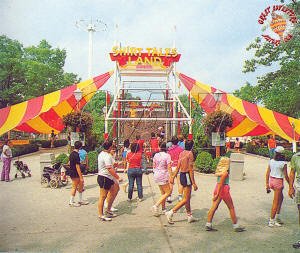 |
Shirt Tales Land featured a unique play
structure portal that was constructed as a remodel and modernization of
the existing Kiddie Kingdom area. Guests could enter via the cargo nets
and slides or under the flanking shade structures.
 |
| |
|
|
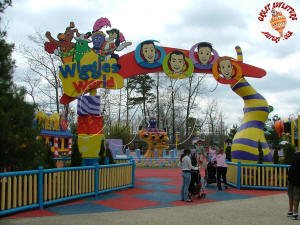 |
In 2006 the Wiggles World section
was added to the park, taking over part of the Looney Tunes Seaport.
The colorful makeover featured twin portals of stacked blocks and curved
columns with cartoon versions of the Wiggles characters on the boomerang
shaped arches. A smaller sign replaced the Seaport sign on one of the
smaller pathways. |
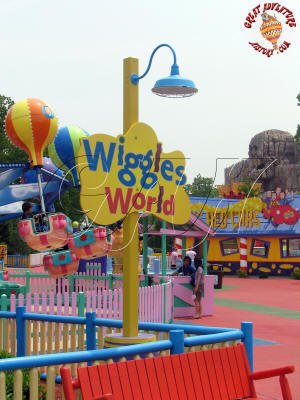 |
| |
|
%20copy_small.jpg) |
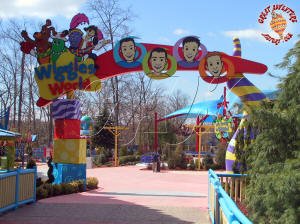 |
| |
|
|
| |
|
|

